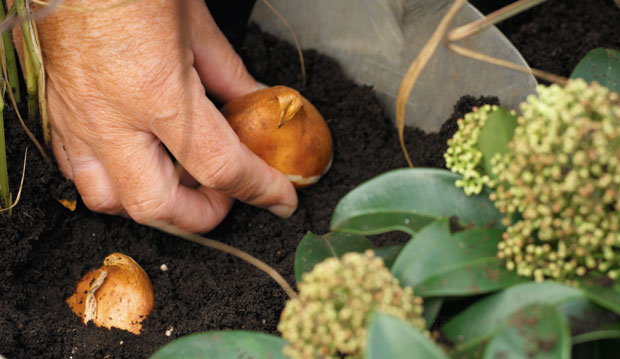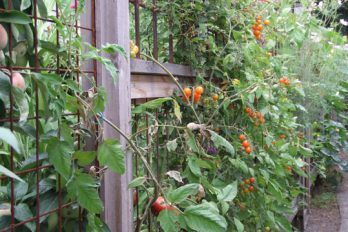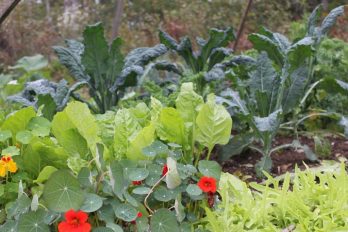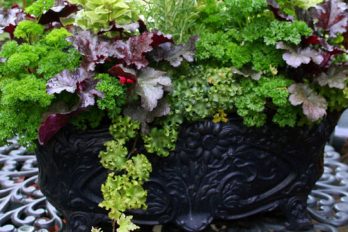- Choose a planting area with good drainage so the bulbs won’t rot.
- Plant larger bulbs (daffodils, tulips and hyacinths) 20 centimetres (eight inches) deep; smaller bulbs such as crocus should be planted 13 centimetres (five inches) deep. Whether small or large, plant in drifts rather than in single rows, spacing bulbs according to package directions.
- Cover bulbs with soil, then water to give the roots a kick-start.
- Plant bulbs as soon as Halloween is over, except for daffodils which can be planted as early as possible in the fall so that they can establish strong root systems before the frost sets in.
- There is no surefire way to protect the bulbs from marauding creatures, but covering bulbs in the hole with chicken wire seems to be one of the more effective solutions. After the bulbs are planted, clean up the area and tamp down the soil so that critters won’t be able to sniff out the bulbs so easily. Many bulbs, such as Fritillaria and Narcissus, are not tempting to squirrels, rabbits or deer.
- After the bulbs have bloomed in the spring, deadhead them but leave the leaves standing until they turn brown. During this time, the sun will turn oxygen, nitrogen, phosphorus and potassium into food that will be stored in the bulb for next year’s growth.





Comments are closed.